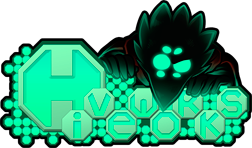Hey all, new page! I was having a discussion today with someone who is interested in writing for comics, and a lot of what we talked about made me want to write a quick article on how WE write them and other important things for you to remember. If you can think of anything I’m missing, or want to contest things, then please, be my guest.
Anyhow, enjoy the page! See you Tuesday!
1) If you are writing a long format comic, plan out the entire chapter in a rough time line. The point of this is to gather your thoughts so the chapter isn’t half drawn when you suddenly remember that you were supposed to introduce an important plot element and totally forgot.
2) Write a very rough script, sit on it for a couple of days, and then edit it. Alternatively, get someone else with no prior knowledge of the chapter/scene/page to edit it immediately. This will make it easier to pick out contradictions, plot holes, tings that doesn’t make sense or aren’t funny or don’t fit the tone you’re going for.
3) Thumbnail your chapter or scene. You can do it page by page, as you make them, but doing them all at once should give you an idea of where the chapter is going visually. You want to make sure that the visuals are transitioning and flowing at the same pace the script does.
4) Revisit your script. Now that you know what your pages should look like, at least roughly, you can compare the thumbnails to you script. You should be able to look at the dialogue in each panel and ask yourself ‘can I convey this text with JUST pictures?’ If yes, then cut that dialogue, you don’t need it. If no, then ask yourself ‘can I convey the same thing/punchline/point in LESS words/word balloons?’ and then trim it down from there.
5) Draw your page, and get everything done but your text. Start adding your text. At the end of the previous step you’ll have already cut a lot of your dialogue, to the point where you might not be able to imagine cutting more. You can and you will cut more. Here is where you trim text, substitute words for other words so that your word balloons are more nicely shaped, and generally make sure that there aren’t so many words in one panel that all of the art is difficult to see.
Things to remember:
- Count your word balloons on a single page. If you’ve gone over 8, you’ve got way too much on there; even 8 is a LOT. If in step 4 you decide that you MUST have a lot of word balloons and don’t want to cut, spread it out over a few pages rather than cramming everything into one page.
- Avoid having your characters talk in a descriptive manner about something you could just as easily draw–if you have to describe the way an object or setting feels, smells, tastes or sounds, you can show rather than tell very easily. Show that it’s hot out by making your characters sweaty and disheveled. Show that a setting stinks by making the characters plug or wave their hands in front of their noses. Show that the cake they just ate is sour by making them scrunch their face up. Show that the room is loud by adding the appropriate sound effects and having the characters cover their ears and shout their regular conversation at each other rather than just saying it. If you just describe these things instead of showing them (as in having your characters say it is hot out, this place smells, this is too sour or it is too loud), it makes it look like you don’t trust your own art enough to convey this message, and/or that your audience just wouldn’t get it without the explanation.
- Take a good hard look at your characters and decide if they sound too alike or not. If everyone speaks exactly the same (and I’m not just talking accents and catch phrases a-la-chrono-cross), you might wanna mix things up.
- If you are going to write accents, speech impediments, stammering, gasping or anything else that keeps your characters from talking in fully formed sentences, try not to be too competitive. A good example is Fat Tony from the Simpsons; he’s Italian, but he doesn’t speak like a cartooney stereotype like, oh, say, Mario and Luigi do with all their voice clips in various mario Kart and Mario Party games. You want a tough talking Italian or a menacing Russian foil for your secret agent? Go to youtube and find real examples of people with real accents speaking. Write down what they’re saying phonetically to get the hang of it.







